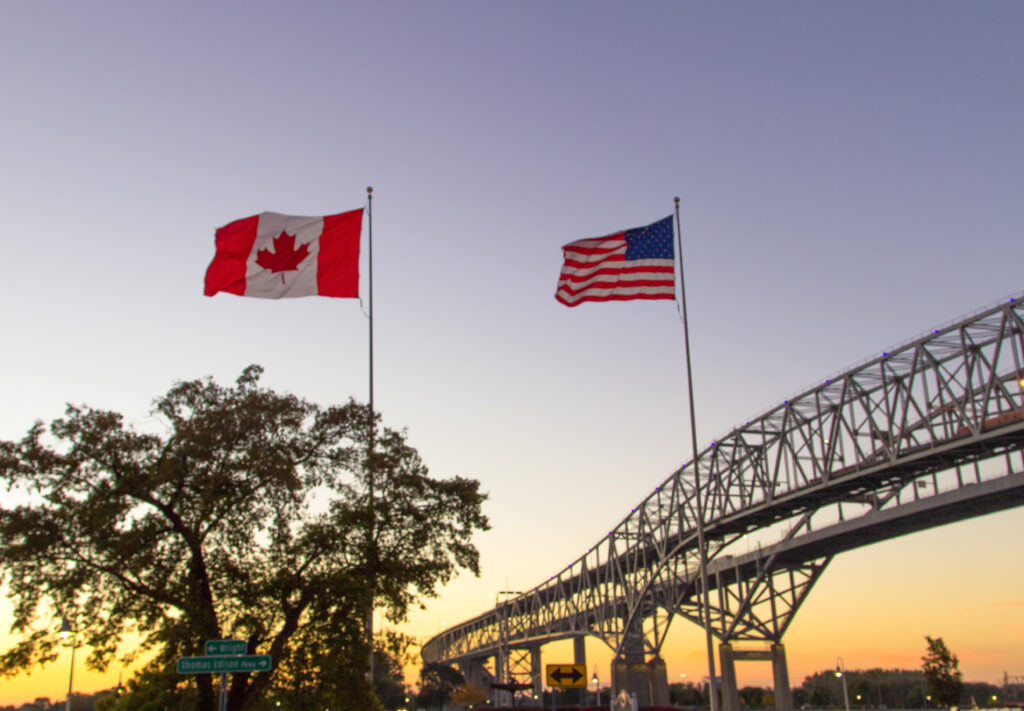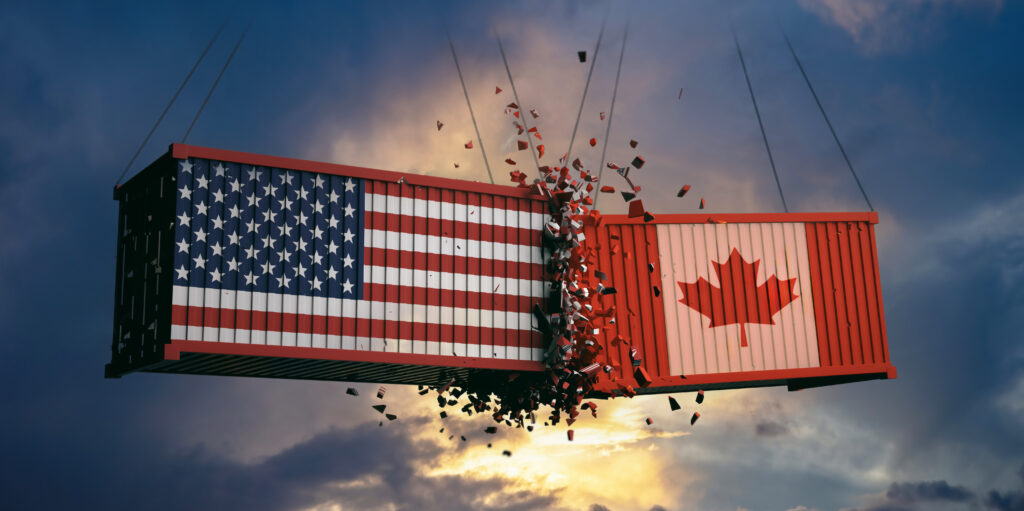In this edition:
- US may exclude sector-specific tariffs on April 2, reports say, but situation fluid
- These are the top economic issues that will dominate the campaign trail
- Federal government announces $19.25M investment in Port Colborne
- Ontario Marine Council presents arguments on proposed U.S. port fees
- Vineland library to benefit from $2M federal grant
- Government of Canada adjusts EI policies to support workers affected by tariffs
- Focus on Finance & Economy
Did you know you can get the GNCC’s Daily Update emailed to you? Click here to sign up.

Picture credit: ehrlif / Adobe Stock
Niagara’s U.S. neighbours putting their ‘elbows up’ for Canada
Western New Yorkers — concerned about U.S. President Donald Trump’s tariff and annexation threats against Canada — will assemble April 2 at 5 p.m. on the Shoreline Trail Bridge, near the Peace Bridge international crossing that can be seen from the Fort Erie side of the Niagara River.
April 2 is significant as it’s the day Trump said his next round of tariffs on Canadian products will kick in.

Picture credit: Rawf8 / Adobe Stock
Just over a week before new U.S. tariffs are expected to come into force, Canadian business leaders say they’re not optimistic that any meaningful reprieve is in the works.
April 2 is set to bring sweeping new reciprocal tariffs from the U.S. in addition to the tariffs on some Canadian and Mexican goods that were delayed by a month. U.S. President Donald Trump had also floated the idea of separate, sector-specific tariffs the same day.

Photo credit: Maksym Yemelyanov / Adobe Stock
Here’s how Ontario tourism, most notably in Niagara, could benefit from Trump’s tariff war
As Canadians wait for updates on the status of so-called reciprocal tariffs from U.S. President Donald Trump on April 2, industries on both sides of the border are bracing for impact.
One thing that appears certain, however, is that more Canadians are foregoing trips to the U.S. in favour of Canadian “staycations.”

Photo credit: Andrii Yalanskyi / Adobe Stock
How tax cut promises stack up to Canada’s soaring cost of living
Focus on Municipalities
Build rental housing again
The rental housing situation in Canada has reached crisis levels. Approximately one-third of Canadian households now rent, up 21% since 2011, yet our rental housing stock hasn’t kept pace with this growing demand. Most of our purpose-built rental buildings (properties built specifically for rental or long-term tenancy rather than ownership) were constructed before 1980.
This shortage, coupled with the high cost of building new housing, has sent rents soaring – the average rent for a Canadian apartment was around $800 in 1990; by 2024 it had almost tripled to roughly $2,196 per month. This is felt the most in major urban centres like Vancouver and Toronto. One in five renter households now faces a core housing need, meaning they spend over 30% of their income on shelter, live in overcrowded conditions, or in substandard housing. For 89% of these households, the primary issue is affordability.
Through the Daily Updates, the GNCC aims to deliver important business news in a timely manner. We disseminate all news and information we feel will be important to businesses. Inclusion in the Daily Update is not an endorsement by the GNCC.



